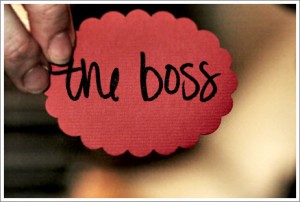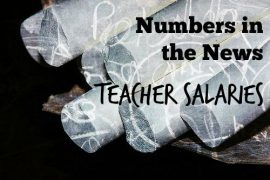Deciding to leave a steady job with a steady income is a big step. Leaving in favor of working for yourself might seem like the craziest idea of all. Believe me. I know from experience.
I’ve been a freelance writer for going on 11 years now, about half of that time while holding down a part- or full-time job. But when my family decided to move to Maryland, I figured it was a good time to try freelancing “without a net.” I didn’t have a job yet, but I did have a Rolodex full of great editorial contacts and a good understanding of how to build a freelance career.
Over the last six years, I’ve grown my business in many ways: from part-time to full-time, from focusing on journalism to writing a book and shifting my attention to curriculum development. (I did the latter, when the bottom fell out of the magazine industry a few years ago.)
I can say two things about this experience: Math definitely helped me launch and sustain my new career. And I couldn’t have made the leap without the support and advice of writer extraordinaire and all-around generous gal, Linda Formichelli.
I met Linda when we were both starting out, but she was about a year ahead of me in the process. These days, Linda is an accomplished writer with two books (The Renegade Writer and Query Letters that Rock), bylines from countless top-notch publications and a booming coaching business.
One thing that any experienced and successful freelance writer knows is this: The writing is secondary. Sure, I’m in it to write. But without some really good business skills, no one will hire me to do what I love. In other words, we’re business owners first and writers second. (And this is true for almost anyone who runs their own business.)
Unlike me, Linda doesn’t have a degree in mathematics. (Her Master’s from Berkley UC is in Slavic Languages.) Doesn’t matter. Linda has learned to apply math to her freelance business. First up: dealing with the bottom line.
“I needed to figure out my hourly copywriting rate based on how much I needed total to make a living plus the amount I needed for overhead — equipment, office supplies, etc.,” Linda says. “I divided that by the number of billable hours I predicted I would have in a year, and also had to keep in mind the going rates — what the market would bear.”
So no, Linda was not consumed with the kinds of pens she would use or scribbling by candlelight each night. The practical won over the romantic. Even with magazines.
“Magazines usually pay by the word, and I needed to figure out how that translated to an hourly rate,” she says. “For example, I sometimes make more money per hour writing for 50 cents per word versus $2 per word because the $2 per word articles are much more research-intensive and often required multiple rewrites.”
(I can’t tell you how important her last sentence is. If a publication requires many hours of editing and rewrites — and some do — your hourly rate plummets. This is part of what we freelancers call the PIA factor.)
Knowing how quickly she can write also helps establishing whether or not an assignment makes sense.
“I know that I can write about 800 words an hour (after the research and interviews are completed), so I can figure out how much time it will take me to write an article of any length,” she says. “For example, many articles run at around 1,500 words, so this will take me about two hours.”
Depending on what the client is offering, this may or may not be a good deal. Here’s an example:
You’ve been offered a 1,500-word story assignment for your local alt weekly newspaper. They’re willing to pay you $0.35 per word, and you’ll need to do four phone interviews. You estimate that those interviews will take about an hour each, and you think you can write the story in two hours. You’ve worked with them before, so you know you can count on about 1 hour of editing. Is the assignment worth it? Let’s look at the math.
1,500 x $0.35 = $525
So if you do the story, you’ll earn $525.
4 hours (for interviews) + 2 hours (for writing) + 1 hour (for editing) = 7 hours
So you can expect to spend about 6 hours on the story in all. (Notice, though, that there’s no time allotted for research or back-and-forth with the editor. And you haven’t included any of the time you spent convincing the editor to give you the assignment.)
$525 ÷ 7 hours = $75 per hour
Now, maybe that’s a good rate for you and maybe it’s not. Regardless, you now have a solid idea of whether or not you should take the assignment.
(If you’re not self-employed, you may be surprised by this rate. But remember we self-employed folks are responsible for all overhead — equipment, facilities, health insurance, vacation and sick leave, taxes and retirement savings.)
And this works in all sorts of careers, whether you’re an artisan or have a landscaping business. The math takes the guesswork out of business planning. And it can keep you on track in any new business venture that comes your way.
If you are attending the American Society for Journalists and Authors (ASJA) conference in New York in April, be sure to check out my panel on math and writing. I and two panelists will talk about how math is important in reporting and running a freelance business. I promise it won’t be boring — and you’ll probably learn how to be a better reporter and business owner. (Psst: Gretchen Rubin, author of The Happiness Project is the luncheon speaker!)
Hey freelancers (of all kinds): what’s your favorite math tip for running your business? Share it in the comments section.








Comments are closed.